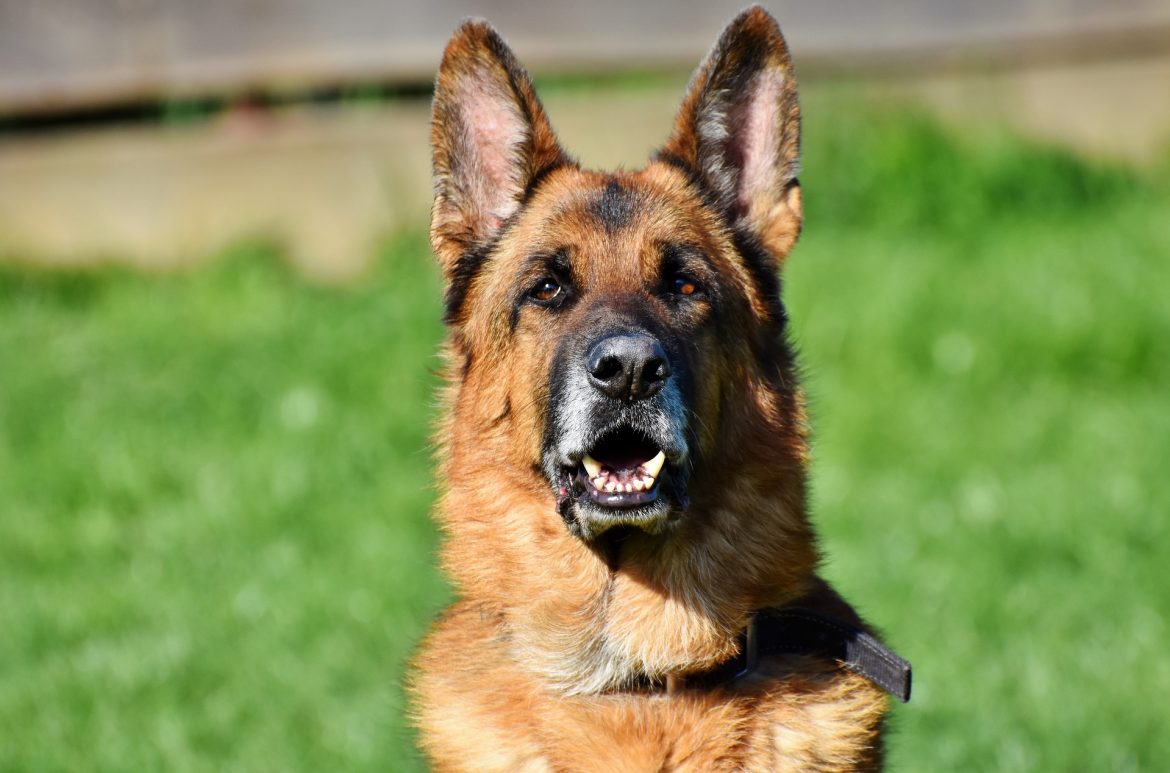You may have seen the clips on Facebook: a sleek, pantherine dog stands in front of their Owner. Ahead of them, a would-be thug wearing padded clothing looms towards them. The guard dog issues a warning bark, then a second, then – BAM! The thug is lying on their back, while the dog pins them to the ground by their shoulders. If they were holding a weapon, the dog has long since disarmed them with their jaws. Any urge to hurt the dog’s Owner has fled along with their nerve.
Needless to say, there is chasm between police-trained K-9 guard dogs, and the cuddly pooches waiting for us at home. Having said that, many Dog Owners hope their furry friends would alert them of trouble in a moment of danger. With this in mind, two questions emerge:
- Will normal dogs guard their Owners without training?
- Can a family dog learn to be a guard dog?

Not every canine is cut out to be a guard dog…
“Will my pooch look out for me without any guard dog training?”
While we hate to play the role of Switzerland, this question is hard to answer definitively. Some Owners have shared stories of their Pomeranian barking off a mugger. Others have complained that their Great Dane greeted a burglar with cuddles and licks. In the end, whether your untrained dog will protect you depends on a wealth of factors – from breed, to temperament.
Some breeds, like Mastiffs, Rottweilers, and Pit Bulls, will naturally protect the humans they love. In fact, extra guard dog training may do more harm than good. By contrast, breeds like the Beagle are will fail as guard dogs no matter how much you train them.
In a nutshell, if you’re looking for a ready-made guard dog, choose a breed with in-built guardian instincts.
If, however, you’re looking to train your current pooch into a guard dog, read on!
“Can I train my current dog to guard my family?”
Before we begin, it pays to grasp the difference between attack dogs and guard dogs.
Attack dogs are like Predator drones: they work for the military, they follow their handler’s orders, and they’re often unsafe in a civilian setting. They’re the dogs you see in army training clips, tearing into trainers wearing padded clothing. While some Dog Trainers are able to keep their dogs in family environments, we’d don’t suggest you attempt it. Unless you’ve made a career of raising attack dogs, you’ll be putting loved ones and strangers alike at risk.
Guard dogs, on the other hand, are like the robot from Lost in Space. They’re affable and family-friendly, but they can warn their humans against danger when the occasion calls for it. Your guard dog may not best a wolf in a fight, but they can scare off a robber. In our society of laws, that’s likely to be enough.
For your dog to learn guard training, they will need to:
- be fully socialised
- respond to commands such as “Come, “Sit”, “Down”, “Heel”, and “Stop”
Unless they’re comfortable around strangers respond to your commands, you’ll be opening Pandora’s Kennel by guard training them.
Their bark is worse than their bite
Once you’re certain they’ll listen to you, you can graduate to the next stage: teaching them to bark. US-based vet Dr Mark provides a guide for teaching your dog to bark, which can serve you for this task. As soon as they’ve learned to bark on command, use your “Stop” or “Down” command to silence them. This will ensure they don’t turn into a furry barking alarm that won’t switch off.
Next, take your dog to an empty, neutral place (like a large park), and have a friend meet you there. For this drill to work, it’s essential that your dog has never met this friend before. Have your friend approach you with their best “You’re in big trouble, bucko” walk. To further the effect, ask them to yell at you as if you were their least favourite boss. As they draw nearer, command your dog to bark at them, and have your friend turn and run in fear.
Not only will this drill train your dog to scare off aggressors, it will also build their self-esteem as a protector.
However, for safety reasons, you’ll need to balance this exercise with another, more gentle drill. After all, the last thing you want is for your furry friend to bark at every person who approaches you. To this end, you should find another friend who your dog hasn’t met. Have them approach you in a relaxed stride, while calling out to you in a warm and gentle tone. If your dog starts barking at them, command them to “Stop”, then reward them with a treat once they do.
This will teach your pup to differentiate between a genuine threat and a harmless passer-by.
We’ve said it once before, but it bears repeating
Again, don’t try any of this unless your dog is fully socialised. A fluffy barking machine will ruin your day, scare those around you, and potentially land your dog in trouble. If you’re unsure how your pooch will react to these drills, book a Dog Trainer for an assessment.


1 comment
Very Helpful- Thanks For Sharing